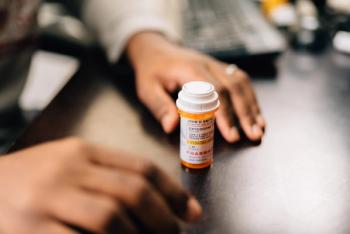
Pharmacy Practice in Focus: Health Systems
- November 2019
- Volume 8
- Issue 6
2019 Marks a Busy Year in Health Systems

Drug shortages and rising prices remain a major issue, with drug pricing legislation on a national level going nowhere fast, and a new gene therapy becoming the most expensive drug approved by the FDA. The opioid epidemic continues to hold the attention of health care providers and organizations, and burnout is increasingly recognized as a problem that needs addressing.
This has been an active and interesting year for the pharmacy profession. Drug shortages and rising prices remain a major issue, with drug pricing legislation on a national level going nowhere fast and a new gene therapy becoming the most expensive drug approved by the FDA. The opioid epidemic continues to hold the attention of health care providers and organizations, and burnout is increasingly recognized as a problem that needs addressing. A novel method for drug delivery debuted, and products containing cannabidiol (CBD) multiplied.
Drug shortages. There appears to be no relief in sight regarding drug shortages, and pharmacists and technicians dealing with them remain at the sharp end of the spear. For the first, second, and third quarters of 2019, there were 276, 282, and 265 active shortages, respectively. Particularly problematic drug classes were antimicrobials, cardiovascular and central nervous system agents, chemotherapy, and electrolytes/nutrition/fluids.1 High-profile shortages of intravenous immune globulin and vincristine consumed a significant amount of pharmacy staff time and received a great deal of attention in the general media.2,3
Drug shortages’ impact on patient care is well known, but less has been reported on the financial and operational consequences for an organization. The results of a survey performed by Vizient this year shed some light on these areas. The findings revealed that the annualized cost of labor needed to manage drug shortages across US hospitals is $359 million; US hospitals spend 8.6 million personnel hours managing the impact of shortages; and 64% of Vizient member hospitals dealt with more than 21 shortages, 33% faced 6 to 20 shortages, and 3% saw up to 5 shortages.4
Civica Rx generated excitement in early October when the drugmaker delivered its first generic medication, vancomycin hydrochloride for injection, to a Utah hospital through a partnership with Xellia Pharmaceuticals. At the time of its founding, Civica Rx said that its goal was to provide a reliable supply of quality generic drugs at fair and stable prices, alleviating some of the shortage issues faced by health systems. Working with supplier partners Exela Pharma Sciences and Hikma Pharmaceuticals, Civica Rx expected to have up to 16 additional medications in production this year.5
Increasing drug expenditures. In 2019, drug expenditures in health systems and hospitals have continued to rise. Vizient estimated that drug price inflation would be 4.92%, with disease-modifying agents, immunomodulatory agents, and oncology medications making up a significant amount of the spending, as in past years.6 Schumock et al incorporated drug price inflation, new product introduction, and volume changes on products on the market and predicted a 4% to 6% increase in overall drug expenditures across the US market for calendar year 2019. Nonfederal hospital drug expenditures were estimated to rise 3% to 5%, with a much larger increase of 11% to 13% projected for the clinic setting. Oncology and specialty medications were both expected to play a major role in driving drug expenditures in 2019.7
An interesting study published in Health Affairs this year assessed the driving factor behind the cost increase of brand-name, generic, and specialty drugs. Specifically, the study examined the relative contribution of new versus existing drugs to the cost changes of injectable and oral drugs used in the ambulatory setting between 2008 and 2016. The authors concluded that brand-name drug prices rose primarily because of inflation in prices of existing drugs, whereas increases in generic and specialty drug prices were mainly driven by new product entry.8
Along similar lines, the Institute for Clinical and Economic Review (ICER) recently published a report on unsupported price increases of prescription drugs in the United States. Of the 9 agents evaluated, 7 did not have substantial new evidence to support their increases, with the increases over the 2-year period accounting for an additional $5.1 billion in spending. The ICER also pointed out that even though 2 drugs did have new clinical evidence, that does not necessarily justify their price increases. A full cost-effectiveness study should be done to assess if the increases were warranted.9 These are the types of increases that national drug pricing legislation will, hopefully, curb.
Drug pricing legislation. Both the Democrats and Republicans introduced bills to reduce prescription drug prices, but it is doubtful that either bill will be passed before the end of the year.10,11 Unlike Congress, 33 states have already moved on this issue, enacting 51 laws addressing drug prices. Components include allowing the import of cheaper drugs, banning gag clauses imposed by some pharmacy benefit managers, creating drug affordability boards, and increasing price transparency. Not surprisingly, the pharmaceutical industry opposed many of the state bills that were passed.12
Gene therapy. In May, the FDA approved onasemnogene abeparvovec-xioi (Zolgensma), a gene therapy used to treat children younger than 2 years with the most severe form of spinal muscular atrophy. It has a price tag of $2.1 million, making it the most expensive approved drug to date, raising issues regarding insurance coverage. Pay-for-value and pay-over-time (installment plan) agreements have been proposed as ways to pay for this therapy. A concern, however, is that allowing payment over time may prevent pharmaceutical companies from pricing therapies more reasonably. It has been suggested that an objective process be established to determine the value of expensive new therapies before they reach the market.13 Onasemnogene abeparvovec-xioi is just the second gene therapy approved by the FDA, after voretigene neparvovec-rzyl (Luxturna), a blindness treatment. The number of gene therapies is expected to rise over the next 5 to 10 years. At the end of the first quarter of this year, 372 gene therapy clinical trials were in progress.14 The FDA estimates that by 2025, it will be approving 10 to 20 new gene therapies per year.15
The opioid epidemic. The magnitude of the opioid epidemic is staggering, considering the numbers. An estimated 130-plus people die every day from opioid drug overdoses, and for the 12-month period ending in February, 15,349 and 32,656 deaths were attributable to overdose of heroin and synthetic opioids other than methadone, respectively.16 All states have enacted mechanisms that allow community pharmacists to dispense naloxone to patients at risk of overdose.17 It is important that pharmacists embrace these programs so patients in need receive naloxone, which has not necessarily been the case to date. Pharmacists have expressed concern over the training requirement, given an already heavy workload, and payment issues, as well as hesitation to treat people with drug addiction.18
More recently, programs have been developed to dispense naloxone to appropriate patients in the emergency department (ED) before they go home, with the logic that the patient has the drug and need not rely on obtaining it from a community pharmacy.19 Pharmacy departments, regardless of whether they have staff dedicated to the ED, must take a leadership role in making this type of program a reality. Pharmacists and/ or technicians also are actively involved in developing pain order sets that employ multimodal analgesia, with less reliance on opioids; modifying the organization’s computerized physician order entry system to eliminate the unnecessary use of opioids (eg, for treatment of mild pain); participating in related educational programming in both the community and hospital settings; and reviewing prescription fill histories using information contained in the prescription drug monitoring program.20
In addition, the Drug Enforcement Administration (DEA) recently proposed reducing the amount of several schedule II controlled substances that can be manufactured in the United States in 2020. In its proposal, the DEA determined the amount of these products needed for legitimate uses while trying to minimize excess product on the market, which could be abused and/or diverted.21
Other noteworthy activities occurring in 2019 and carrying into the new year include the following:
- Continued emphasis on resilience and preventing burnout in health care providers, including pharmacists. A recent report from the National Academy of Medicine, “Taking Action Against Clinician Burnout: A Systems Approach to Professional Well-Being,” describes goals that health care organizations should pursue to help foster professional well-being and minimize burnout.22
- Use of drones to deliver drugs, medical supplies, and records to health care facilities and people’s homes. United Parcel Service is using drones to ship medical supplies across hospital campuses in North Carolina and signed an agreement with CVS to assess the potential for prescription deliveries to be made via their drones.23 In October, Walgreens made its first on-demand drone delivery, a cold-and-cough pack containing acetaminophen, to a family in Christiansburg, Virginia.24 Pharmacists will need to consider the ramifications of using drones for medication delivery and put the necessary processes in place to ensure patients’ effective and safe use of medications received via this delivery modality.
- Proliferation of CBD-containing products.25 Many issues exist related to the composition and quality of these products; nevertheless, pharmacists must know about CBD's common adverse effects and potential drug-drug interactions. They will need to be proactive in obtaining a good drug history, including CBD product use, when providing drug therapy recommendations to patients or their providers.26
If 2020 is anything like 2019, it will be another eventful year for the pharmacy profession.
REFERENCES
- Drug shortages statistics. American Society of Health-System Pharmacists website. ashp.org/Drug-Shortages/Shortage-Resources/Drug-Shortages-Statistics. Accessed October 21, 2019.
- Goldberg C. Shortage of life-saving infusion strains hospitals and leaves patients in limbo. WBUR. July 9, 2019. wbur.org/commonhealth/2019/07/19/intravenous-immunoglobulin-shortage-ivig. Accessed October 23, 2019.
- Rabin RC. Faced with a drug shortfall, doctors scramble to treat children with cancer. The New York Times. October 14, 2019. nytimes.com/2019/10/14/health/cancer-drug-shortage.html.
- Drug shortages and labor costs: measuring the hidden costs of drug shortages on U.S. hospitals. Vizient website. newsroom.vizientinc.com/sites/vha.newshq.businesswire.com/files/doc_library/file/Drug_Shortages_Labor_Cost_Report_Vizient.pdf. June 2019. Accessed October 25, 2019.
- Patients are now being treated with a Civica Rx medication [news release]. Salt Lake City, UT: October 2, 2019; Civica Rx. businesswire.com/news/home/20191002005196/en/Patients-Treated-Civica-Rx-Medication. Accessed October 21, 2019.
- Drug price forecast. Vizient website. newsroom.vizientinc.com/sites/vha.newshq.businesswire.com/files/doc_library/file/Jul2018_DrugPriceForecast_Media_FINAL.pdf Accessed October 21, 2019.
- Schumock GT, Stubbings J, Hoffman JM et al. National trends in prescription drug expenditures and projections for 2019. Am J Health-Syst Pharm. 2019;76:1105-1121. doi: 10.1093/ajhp/zxz109.
- Hernandez I, Good CB, Cutler DM, Gellad WF, Parekh N, Shrank WH. The contribution of new product entry versus existing product inflation in the rising cost of drugs. Health Affairs. 2019;38(1):76-83. doi: 10.1377/hlthaff.2018.05147.
- Unsupported price increase report. Institute for Clinical and Economic Review. icer-review.org/wp-content/uploads/2019/01/ICER_UPI_Final_Report_and_Assessment_100819_Final.pdf. Published 2019. Accessed October 15, 2019.
- Sullivan T. Senate finance committee releases proposed drug pricing legislation. Policy & Medicine. September 29, 2019. policymed.com/2019/09/senate-finance-committee-releases-proposed-drug-pricing-legislation.html. Accessed October 21, 2019.
- H.R.3, The lower drug costs now act. speaker.gov/sites/speaker.house.gov/files/HR3%20Lower%20Drug%20Costs%20Now%20Act%20Backgrounder%209.23.19.pdf. Accessed October 2, 2019.
- Findlay S. States pass record number of laws to reel in drug prices. Kaiser Health News. September 9, 2019. khn.org/news/states-pass-record-number-of-laws-to-reel-in-drug-prices/. Accessed October 23, 2019.
- Butcher L. Paying for high-cost drugs like you’d pay a mortgage-and with strings attached. Managed Care. July 15, 2019. managedcaremag.com/archives/2019/7/paying-high-cost-drugs-you-d-pay-mortgage-and-strings-attached. Accessed October 21, 2019.
- Philippidis A. 25 up-and-coming gene therapies of 2019. Genetic Engineering & Biotechnology News. May 20, 2019. genengnews.com/a-lists/25-up-and-coming-gene-therapies-of-2019/. Accessed October 21, 2019.
- Thomas K. Novartis hid manipulated data while seeking approval for $2.1 million treatment. The New York Times. August 6, 2019. nytimes.com/2019/08/06/health/novartis-fda-gene-therapy.html. Accessed October 21, 2019.
- What is the U.S. opioid epidemic? hhs.gov/opioids/about-the-epidemic/index.html. Published September 4, 2019. Accessed October 21, 2019.
- Pharmacist prescribing naloxone. National Alliance of State Pharmacy Associations. naspa.us/resource/naloxone-access-community-pharmacies/. Published January 17, 2019. Accessed October 21, 2019.
- Gorman A. Pharmacists hesitant to dispense lifesaving overdose drug naloxone. Modern Healthcare. January 6, 2018. modernhealthcare.com/article/20180106/NEWS/180109948/pharmacists-hesitant-to-dispense-lifesaving-overdose-drug-naloxone. Accessed October 21, 2019. .
- Gunn AH, Smothers ZPW, Schramm-Sapyta N, Freiermuth CE, MacEachern M, Muzyk AJ. The emergency department as an opportunity for naloxone distribution. West J Emerg Med. 2018;19(6):1036-1042. doi: 10.5811/westjem.2018.8.38829.
- Reynolds V, Causey H, McKee J Reinstein V. The role of pharmacists in the opioid epidemic: an examination of pharmacist-focused initiatives across the United States and North Carolina. NC Med J. 2017:78(3):202-205. doi: 10.18043/ncm.78.3.202.
- DEA proposes to reduce the amount of five opioids manufactured in 2020, marijuana quota for research increases by almost a third [news release]. Washington DC; September 11, 2019: US Drug Enforcement Agency website. dea.gov/press-releases/2019/09/11/dea-proposes-reduce-amount-five-opioids-manufactured-2020-marijuana-quota. Accessed October 21, 2019.
- To ensure high quality patient care, the health care system must address clinician burnout tied to work and learning environments, administrative requirements. National Academy of Medicine website. nam.edu/to-ensure-high-quality-patient-care-the-health-care-system-must-address-clinician-burnout-tied-to-work-and-learning-environments-administrative-requirements/. Published October 23, 2019. Accessed October 25, 2019.
- Garrity M. UPS to expand fleet of drones to hospitals across the country. Becker’s Hospital Review. October 22, 2019. beckershospitalreview.com/supply-chain/ups-to-expand-fleet-of-drones-to-hospitals-across-the-country.html. Accessed October 23, 2019.
24. Walgreens makes first drone delivery. Chain Drug Review. October 18, 2019. chaindrugreview.com/walgreens-makes-first-drone-delivery/. Accessed October 23, 2019.
25. Bellamy J. FDA: no CBD in dietary supplements or foods for now, but let’s talk. Science-Based Medicine. May 9, 2019. sciencebasedmedicine.org/fda-no-cbd-in-dietary-supplements-or-foods-for-now-but-lets-talk/. Accessed October 23, 2019.
26. Brown JD, Winterstein AG. Potential adverse drug events and drug-drug interactions with medical and consumer cannabidiol (CBD) use. J Clin Med. 2019;8(7). doi: 10.3390/jcm8070989.
Articles in this issue
almost 6 years ago
How Nonopioids Can Be Used More In ICUsalmost 6 years ago
Vaccines Play a Role in Cancer Treatmentalmost 6 years ago
USP Recommends Medical Surveillancealmost 6 years ago
2019 Was a Big Year in Health Systemsalmost 6 years ago
FDA Adds Novel Antimicrobials to Arsenalalmost 6 years ago
Pharmacists Should Know How to Treat Cellulitisalmost 6 years ago
Zulresso From Sage Therapeuticsalmost 6 years ago
API Sourcing: Is This Really a Good Idea?Newsletter
Stay informed on drug updates, treatment guidelines, and pharmacy practice trends—subscribe to Pharmacy Times for weekly clinical insights.



















































































































































































































